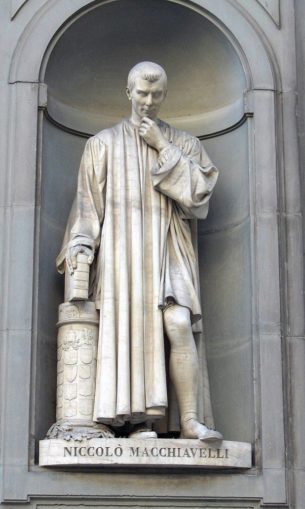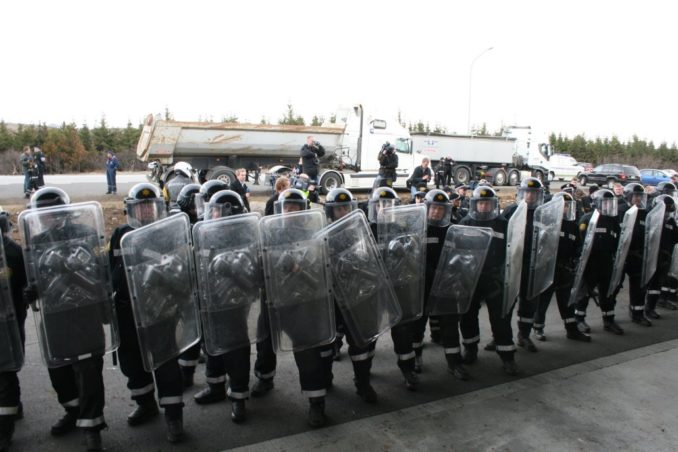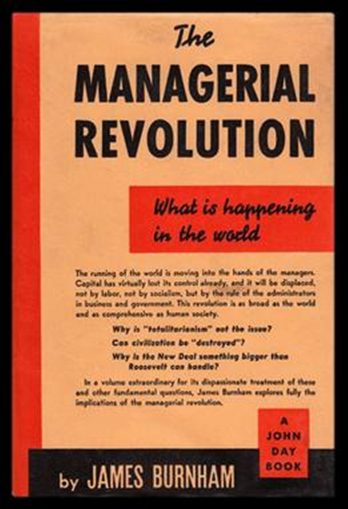“Power is not a means; it is an end.” – O’Brien, George Orwell, 1984.
“Only power can control power.” James Burnham, The Machiavellians
In this essay, I will attempt to summarise the elite theory of politics and power.
Elite theory can be used to analyse who really controls the world, how they do it, and what can be done about it. It explains why certain political movements are successful whilst others appear doomed to failure. Why was the Brexit vote successful? Why have protests such as the French gilet jaunes or the Canadian truckers failed? What was really going on with the rise and fall of Donald Trump? How did western ‘liberal’ democracies get away with copying the Chinese Communist Party during Covid?
Note: in being able to write this article, I am very much indebted to the Academic Agent. I would highly recommend his online lecture course on this topic, Foundations of Politics, available at academic-agency.com
What is the elite theory of power?
The basic concept of elite theory is that all societies are ruled by an organised minority – an elite class – who hold power over the majority.
The theory can be traced back to the political realism of Machiavelli, and a trio of Italian thinkers – Gaetano Mosca, Vilfredo Pareto and Robert Michels – writing in the early 20th century. It has been picked up at various times by other political theorists, including figures on the American right, such as James Burnham and Paul Gottfried. The notable thing about the elitist view is that its advocates have spanned the political spectrum, often coming to the same conclusions independently. The key writers have ranged from marxists, liberals, conservatives and fascists. As we will come on to see, the elitist view of power sees ideology itself as a subordinate feature of the underlying structure of power. As such, the elitist theory gets very close to being a value free study of human nature and society.

Lorenzo Bartolini, Public domain, via Wikimedia Commons
The main concepts:
- Power is always top down. Society is divided between the rulers (the elite minority) and the ruled (the mass majority).
- Following on from this, concepts such as the ‘power of the people’ and representative democracy, are delusions.
- Power is exercised in a cynical and corrupting manner – it is oligarchical, manipulating and self-perpetuating.
- The elites do not have absolute power however, and there is always a ‘circulation’ of elites. They must base their rule on certain myths in order to achieve legitimacy – these myths are called political formulas.
Let us consider in more detail who the elites are today, how they maintain their power, and how they can be replaced.
The Rulers and the Ruled
The elite theorists see rule by a minority as an inevitable consequence of the need for human organisation. Michels said “who says organisation, says oligarchy“. As a result, the people who provide the required level of organisation always have core attributes that differentiate them from those they rule. Fundamentally, the rulers must be fewer in number, organised, and will tend to have common aims and interests. This fundamental concept of organisation and rule explains why a line of 100 policemen can control a mob of 1000 disorganised protesters.

This file is licensed under the Creative Commons Attribution 2.0 Generic license.
In previous times the rulers consisted of elites such as the aristocracy, the landed gentry and bourgeoisie class. Elite theorists note the difference between feudal systems of organisation and, with the move to nation states, the need for bureaucratic organisation. This meant different skills and attributes became more valuable within the ruling classes. In 1941 James Burnham identified the emergence of a new class of ruler as a result of this change – the Managerial class.
The Managerial Elite
Burnham spoke of a class of people who are well educated, skilled in the use of language and persuasion, hard working, ambitious, confident and with managerial skills. Borrowing from Machievelli, Pareto characterised people with such attributes as being like ‘foxes’, as opposed to ‘lions’. This is the difference, for example, between a feudal lord and a high ranking civil servant. The managerial elite are people who can apply their competences to the fields of politics, business or the mass media interchangeably. Indeed, Burnham saw these three domains of society as mutually supporting each other – in order to further the managerial class as a whole.
To understand what Burnham had in mind, think of someone like Nick Clegg who can easily transfer from being deputy prime minister to being a senior executive in Facebook. Or people like Theresa May, Bill Gates, the Davos man, any CEO, Chris Whitty, Cressida Dick, charity executives, Mark Carney, Meghan Markle etc. Burnham said such people were all essentially managers. They are foxes because they use guile and cunning to further their own careers. They lack the ‘skin in the game’ or deep wisdom of more traditional elites under a feudal or bourgeois order. This managerial class emerged under the rise of nation states, mass capitalism and mass media. It is now being further supercharged by globalisation.

The popular myth and the elitist reality
Once you apply the elitist lens to society, everything suddenly looks rather different to what we are told.
The nation state
The myth: the people are sovereign and choose their representatives. The majority get to decide.
The reality: The managerial elite always get themselves elected and are at best rubber stamped by the electorate. The minority decide.
Mass capitalism
The myth: owners of capital and entrepreneurs control business and respond to consumer demand.
The reality: the managerial elite control corporations, buy up truly entrepreneurial enterprises, and dissatisfied shareholders can only replace one set of managers with another virtually identical set.
Mass media and culture
The myth: the media, advertising and entertainment industries give the masses what they want.
The reality: the managerial elites within mass media determine what the masses see and hear in order to promote the managerial class and its ideas and interests. They interpret discourse around the political formulas and engineer consent through propaganda techniques.
Separation of power
The myth: there is a separation of powers within society as different institutions hold each other to account.
The reality: the managerial elite control all institutions, and because they have the same interests there is no real check on power. There is no independent judiciary, the rule of law is only applied when it suits, and the media and press avoid criticising the managerial elite as much as possible.
Ideology
The myth: Political ideologies matter and determine the political structure.
The reality: Ideologies are merely post-hoc concepts used to justify power. The elites are indifferent to ideas and will jump on whatever ideological bandwagon is helpful at the time. The formal power structure of liberal America, communist Russia, or Nazi Germany was essentially the same.
This last point is brought home by an observation by Carl Schmitt. He said that we can see how a system really works not from its routine behaviour, but how it acts when it is in crisis: “the exception is more interesting than the rule.” So, for example, during the Covid Pandemic, despite decades of precedent, civil rights were discarded at the drop of a hat; corporations sided with governments 100%; the mainstream media did not reflect populist discontent; and small entrepreneurial businesses closed as corporations grew in size. In short, the managerial elites grew in power from the pandemic and our assumed rights were revealed to be an illusion.
Political formula
Mosca said that power requires a political formula to provide moral justification. The political formula doesn’t need to be true, but must serve a psychological function for the majority. The best example of a political formula is the divine right of kings. For centuries the majority accepted rule by a monarch because they accepted that he was appointed by God. Probably the strongest political formula currently in the west is the one that underpins the American system of democracy – ‘we the people’. Elite theorists see political formulas as empty slogans but also essential rationales of power that provide buy-in from the masses. Examples of a political formula might include ‘listen to the experts’, ‘trust the science’ or any other slogan developed during covid.

Navyatha123, CC BY-SA 4.0, via Wikimedia Commons
Recent progressive political formulas cleverly try to convince us that things that we think of as political don’t in fact need to be political at all. Climate change is an example of this. It’s just science! Tony Blair is a particular proponent of this deception – “we need to put politics aside and just do what’s right.” Schmitt countered this by saying that liberalism vainly tries to deny the reality of political conflict, pretending that everyone can just get along. In contrast, Schmitt boiled politics down to its most essential component – the distinction between friend and enemy.
The Circulation of Elites
It may be tempting to see the elites as having an iron grip on power. But as we have seen, their makeup has changed over time. Pareto called this the circulation of the elites. The elites must have a political formula that resonates with the masses, or they will be usurped by an elite that does.
How can a political formula result in certain elites losing power? An example could be Hilary Clinton letting the mask slip and calling a significant number of American voters deplorables. This description represented a political formula no doubt shared by many members of the US elite, but rejected of course by the deplorables themselves. It contrasted with Trump’s political formula of ‘America First’. Another political formula that could be a step too far is one currently held by the Labour Party – ‘trans women are women’. Although the majority is disorganised and unable to overthrow the elites, if pushed too far the majority will refuse to cooperate. Fear of this results in a certain amount of self-disciplining within the managerial elites themselves and realignment of elites when needed. Consider how someone like Piers Morgan will change his tune over time depending on how the wind blows to maintain his position of influence.
However, truly dissident voices will be shut down by the ruling elites in short order. Burnham said that the difference between the west and totalitarian regimes was that the west relied more on softer influence to control rival elites. We have seen though that as the internet has made it harder for dissidents to be silenced through soft measures, the elites have had to resort more directly to authoritarian measures.
Retaining Power – The High Low Middle model
The elite theorist De Jouvenel noted a repeating pattern throughout history of the power centre (the High) undermining rivals (the Middle), by appealing to the masses (the Low) and playing them off against the Middle. He saw the Middle as those of independent means, such as the aristocracy or middle class, who were able to live free from dependence on the state. Viewed through this lens, our current obsession with equality and diversity can be seen as merely a power-play in action. Consider a concept such as white privilege. It is used by various elites – progressive politicians, academics and increasingly corporations – to rile up particular sections of the masses. And who is particularly undermined by the concept of white privilege? It will be weighted against individuals of independent means who are potential rivals to the elites. Of course, institutions can also label themselves with white privilege, but what is then the solution? It will always involve strengthening the managerial elite in some way. Under this model, groups such as BLM or Extinction Rebellion should not be seen as part of the elites. They are the useful idiots who will be used by the High as a weapon against the Middle. This is why every member of the current managerial elite will support these things, until the elite as a whole discards it. Under this view, persuading the masses to attack rival “castles” as De Jouvenel put it, is a well worn strategy of the dominant elite.

mattbuck (category), CC BY-SA 2.0, via Wikimedia Commons
What comes next?
The inevitable conclusion of elite theory is that we will always be ruled by one set of elites or another – it is simply a consequence of the need for organisation. It also asserts that elites cannot be overthrown by the masses except with the help of existing elites. This is perhaps why just as society appears to be more fragmented the elites appear more uniform than ever before – they are reasserting agreed political formulas and purging potential rivals. More recent elite theorists have noted that our current elites appear to have an obsessive need to establish consensus on key issues. De Jouvenel predicted a fusion between state and corporate power resulting in eventual totalitarianism. He called this syndicalist feudalism, with the old state being replaced as the central authority by globalist corporatism. This results in the complete atomisation of individuals within society. We are beginning to witness this now with how big tech companies have aligned with the democrats in the US. Increasingly the tail wags the dog.
At its most cynical level, elite theory suggests the best you can hope for is that the elite is made up of your friends rather than your enemies. Those of us who have an instinctive reaction against the current regime, however, are likely longing for an elite whose ideas and interests are more in tune with those of the masses.
Despite the cynicism and pessimism, there are signs of hope. We have seen elites insisting on consensus for new and radical political formulas that are not shared by large sections of society. We have seen an increase in balkanisation, with society becoming more divided as the elites assert their authority in times of crisis and many people resist. Globalism has accelerated the changes in the elites that took place with the rise of the nation state, and it now looks increasingly like overreach. Pareto saw history as a see-saw of power between the foxes and lions, and we are certainly in a time dominated by foxes with the managerial elites.
The elite theorists all agree that the elites must exist in reference to the circumstances of a particular age – they cannot survive in a bubble. Eventually discontented elites will ally with the masses to revolt against the dominant elites. The internet has also enabled new elites to rise up in the public consciousness. It has allowed rival castles to overcome elitist propaganda, and to organise. Populist failures to date will serve to teach the lesson that organisation and elite support are essential for mass movements to stand a chance. The High Low Middle model could also be viewed with globalism as the new High and national governments as the new rival Middles. Nationalism, with its national armies, could therefore be seen as emerging resistance against the new globalist elite. As these factors grow, we may well see an eventual re-circulation of elites away from the current globalist managerial class.
© JimmySP 2022



